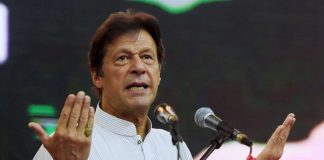JUNE 14, 2019

WASHINGTON, D.C. – A senior Trump administration official said on Thursday there were “serious concerns” about India’s planned acquisition of Russian S-400 missile defense systems that could not only leave India vulnerable to sanctions but also “limit” interoperability between US and Indian militaries, a key focus of growing ties between the two countries.
India’s acquisition of S-400s “effectively could limit India’s ability to increase our own interoperability”, Alice Wells, head of the state department’s South and Central Asia bureau told lawmakers at a congressional hearing.
The threat to defense interoperability is a new and developing argument Americans are deploying to ratchet up the ante for India by saying it could be risking growing defense ties marked by the signing last year of the Communications Compatibility and Security Agreement (COMCASA) that allows the sharing of classified defense intelligence and is considered a foundational military pact, the sale and offers of sale of hi-tech defense equipment and platforms to India and joint exercises.
“At (a) certain point a strategic choice has to be made about partnerships and a strategic choice about what weapons systems and platforms a country is going to adopt,” Wells said.
The United States first used the interoperability argument in the context of S-400s against Turkey, a NATO ally. It is in danger of losing the alliance’s next-generation F-35 fighter jets that it had contracted to buy, and already paid for, over its plans to buy the Russian missile defense systems despite American warnings and threats, because, US department of defense officials said earlier this week, the two platforms are “incompatible”. Americans, actually, fear that their cutting-edge, superior technologies could be compromised working in the same environment as Russian equipment.
Interoperability was Wells’s first line of argument on the issue of S-400s on India’s shopping list in response to a question from a lawmaker who wanted to know India’s reasons for pursuing the deal. And it overtook the threat of sanctions US officials had held out as the lead deterrent under a US law aimed at punishing Russia for the 2016 election meddling, the Countering American Adversaries Through Sanctions Act (CAATSA).
It was not an empty threat at the time and now after a Chinese military procurement agency was sanctioned for buying the same Russian defense systems.
Wells did deploy the sanctions threat at the hearing, but later. “There is no blanket waiver or country waiver when it comes to an S-400,” she said, adding, “we have serious concerns about a possible S-400 purchase and we are continuing our conversation on what the United States or others … how they could assist India.”
The United States has offered India its top-of-the-line Terminal high Altitude Area Defense (THAAD) and Patriot-3 missiles defense systems instead, as obliquely acknowledged by Secretary of State Mike Pompeo in a speech Wednesday to preview his upcoming first visit to India.
Pompeo mentioned the months-old offer of the two American missile defense systems without mentioning S-400s. India has yet to respond and has seemed determined to go ahead with the Russian system, a deal that was formalized during President Vladimir Putin’s visit to New Delhi last October.
The United States is not about to give up though and it has conveyed it multiple times to Indians. But Indian interlocutors and officials, who have sought to overplay India’s clout in a miscalculated bid to brazen it out, either ignored the warnings or misread them. And not for the first time in recent times. Despite their pushy optimism, India did not get a second round of waiver from US sanctions on Iranian crude exports (India was one of their biggest buyers) and found itself kicked off a list of 120 countries whose products could enter the US duty free under the Generalized System of Preferences programme.
Courtesy/Source: Hindustan Times










































































































